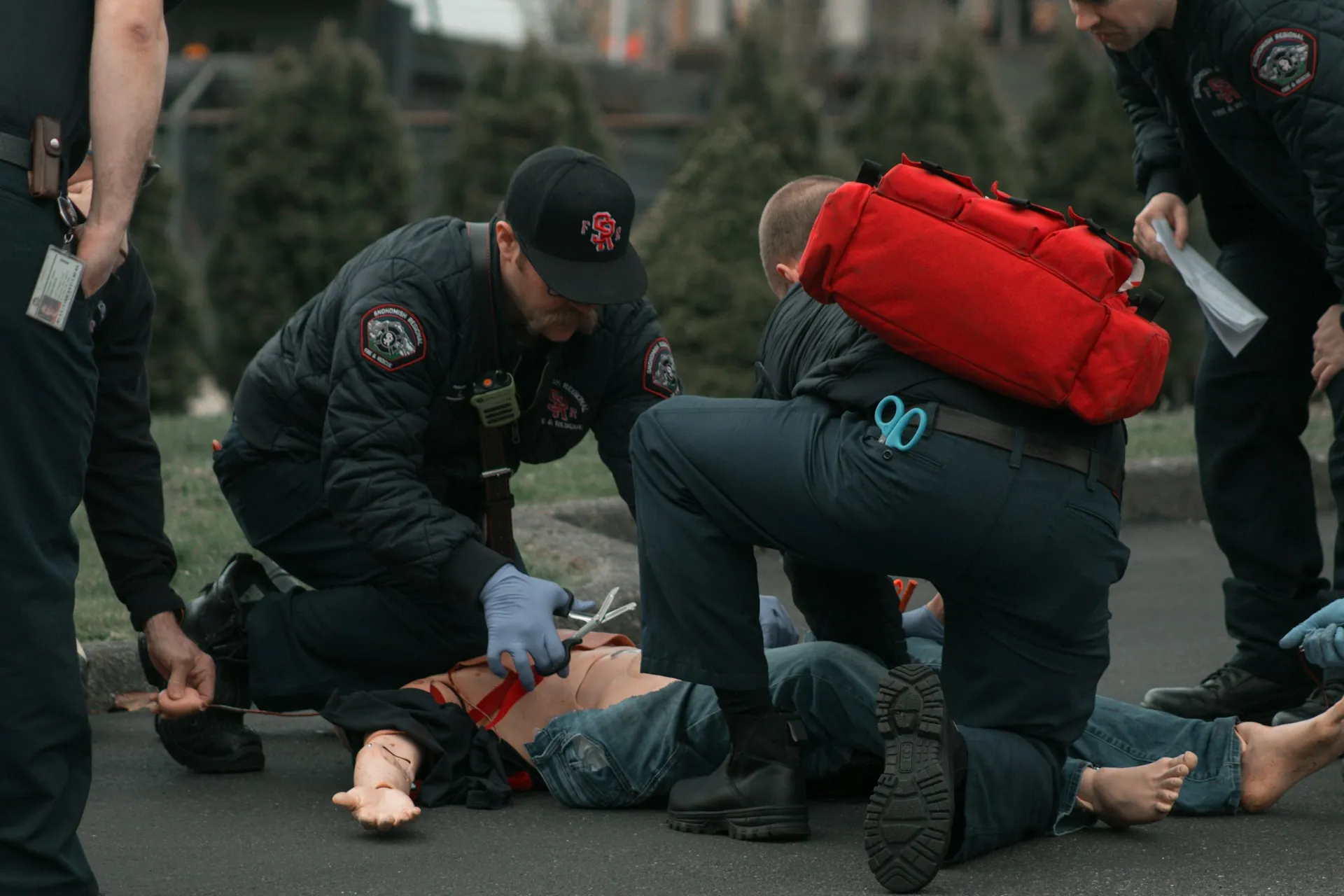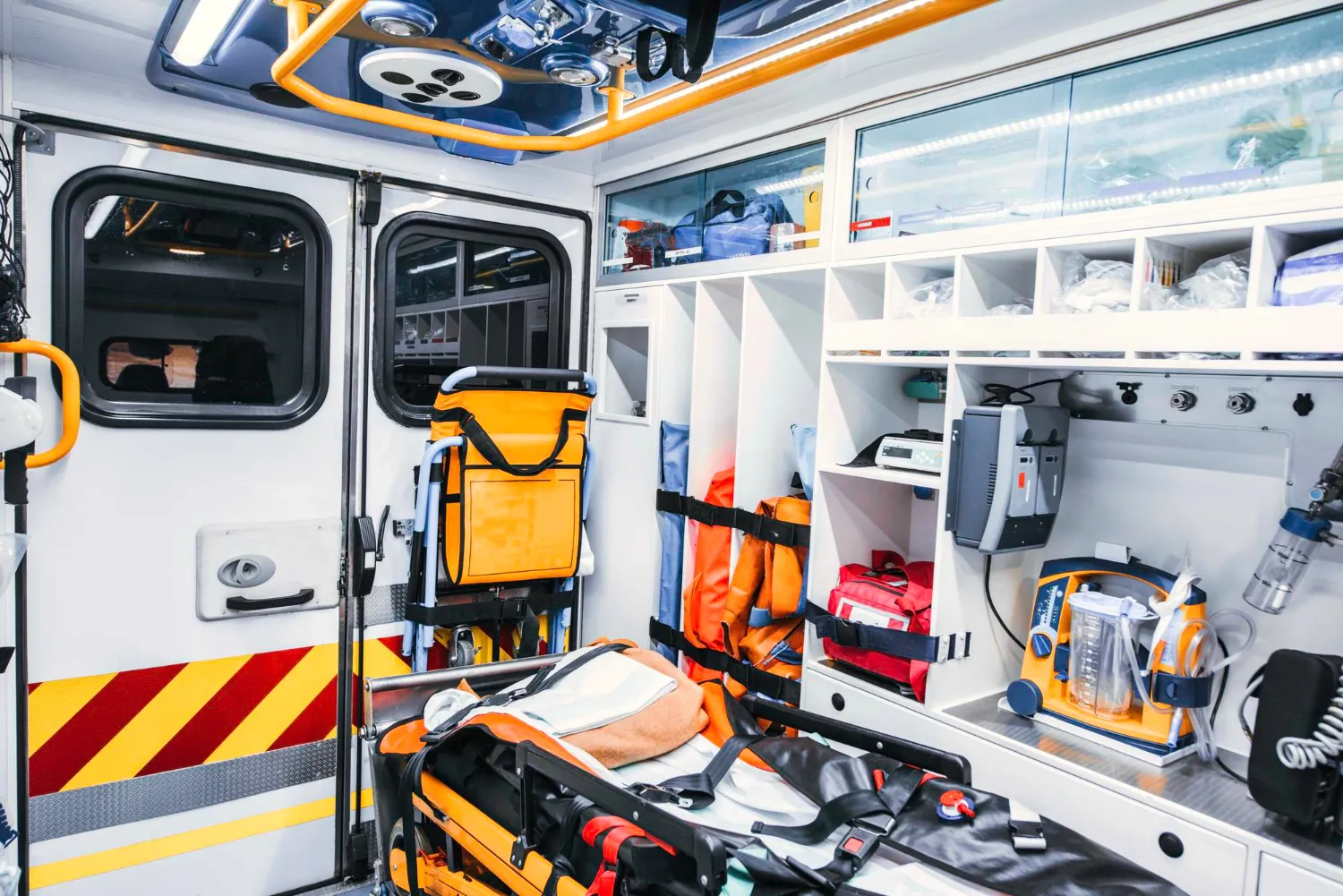What to Know About Air Medical Transport: Careers, Qualifications, and Daily Realities

It takes a special type of person to work in air medical transport …, but it can be the most satisfying and fulfilling career for the right person. Air medical transport, or air ambulance services, play a vital role in emergency response, especially when every second counts.
If you think you might be one of the unique individuals who can travel to remote trauma scenes, transfer critically ill patients, and serve in disaster relief efforts, here’s what to consider before joining the elite field.
What Is Air Medical Transport?
Air ambulance services are like superheroes in dire emergency situations. Flying in with helicopters or fixed-wing aircraft, they quickly transport patients needing the most urgent medical attention.
Air ambulance companies generally employ a range of response vehicles to accommodate a variety of situations—this may be rural emergencies miles away from trauma centers or neonatal transfers for the tiniest and most vulnerable patients.
Life flight helicopters are the go-to transport for areas where people might need fast transport for trauma and emergency services. Typically, they're found in rural areas, mountainous regions, and near National Parks or other recreational locales. Airplanes are generally reserved for long distances and interfacility transport.
Regardless of the type of aircraft, air ambulance services are especially crucial for underserved and hard-to-reach areas. They're vital during natural disasters and when ground transport simply can't access care fast enough.
Who Works on an Air Ambulance Crew?
So, who are the superheroes behind these aircraft procedures? Similar to ground EMS, there are paramedics, drivers (in this case, pilots), and communication teams. Although much of the training is similar, additional requirements are necessary when treating patients in the air.
Here's a breakdown of the typical roles in an air ambulance:
Flight Paramedics
To be a flight paramedic, you must undergo advanced training even beyond the robust paramedic credentials. Air ambulance companies usually require applicants to have 3-5 years of high-acuity experience (for example, in an ER or ICU). Flight paramedics need flight paramedicine (FP-C) certification and excellent skills in critical care, airway management, and trauma response.
Flight Nurses
Many flight crews also have CCRNs (Critical Care Registered Nurses) on staff. These medical responders typically hold CFRN (Certified Flight Registered Nurse) credentials and are proficient in delicate areas such as neonatal and pediatric life support.
Air Ambulance Pilots
Any time you’re operating an aircraft, you must have flight training and certification (including a pilot license). Air ambulance pilots also need special medical aviation instruction and the knowledge and ability to handle challenging terrain and hazardous weather.
Communication & Dispatch Teams
In any EMS situation, communication and dispatch specialists are integral to the process. When communication is about coordinating rapid, sometimes risky, missions between aircrews, hospitals, and ground responders, these specialists are absolutely imperative! The right calm, organized, and efficient personality is a must.
Air Ambulance Education and Certification Requirements
Each role on a Life Flight helicopter or air ambulance crew plays a pivotal part in the rescue mission. It goes without saying special training and rigorous standards are expected and required.
Paramedics typically need FP-C certification, ACLS (Advanced Cardiovascular Life Support), NRP (Neonatal Resuscitation Program), and PALS (Pediatric Advanced Life Support) training. Air ambulance nurses generally hold a CFRN or CCRN. Additionally, they will need the same ACLS, NRP, and PALS training.
All air ambulance crews will also need to meet specific fitness and physical health requirements. Team members must be able to lift patients, work in confined spaces, and navigate some of the most physically demanding conditions. Health and fitness are essential to ensure that they don't become part of the emergency themselves.
Beyond the physical requirements and medical certifications, air ambulance work requires a particular personality type. Specific soft skills necessary for the role include critical thinking, quick decision-making, and adaptability. In an unpredictable air medical environment, a cool head must always prevail.
What Is a Typical Day Like in Air Medical Transport?
So, what does a typical air medical transport shift look like? The truth is, there's rarely one shift that looks like another. Of course, just like any job, specific routines and activities must be completed daily.
A typical air medical transport shift runs 12 to 24 hours, depending on the agency's guidelines and requirements. During their shift, crew members must stay on base and be ready to deploy immediately.
The daily responsibilities of air ambulance personnel include:
• Conducting pre-flight safety and equipment checks.
• Carefully monitoring weather and flight paths.
• Responding to a wide range of call types (vehicle accidents, facility transfers, etc.).
• Continuously developing professional skills to stay mission-ready (continuing education, simulation drills, equipment training, and more).
There is downtime in between calls. Since personnel must stay on base and ready for calls, downtime might be spent bonding with other team members, training, or resting before the next high-stress call.
Working in air medical transport is extremely rewarding but includes many unique challenges and risks. Dangerous conditions, night flights, and hazardous terrain are the norms personnel face daily. Additionally, air ambulance crews can see some of the most severe trauma and fatalities on the job. Due to the dire nature, every call is intense and can be highly emotional.
To support and offset the stress, many agencies offer support and mental health resources for their staff. Burnout is common, and making the most of structured downtime is essential to help teams manage stressors and challenges and avoid emotional and physical fatigue.
Of course, the other side of the coin is these roles have many benefits and rewards. Most air medical transport professionals love their job and get a deep sense of satisfaction and purpose from the work.
There are continuous professional growth opportunities, and air ambulance work often means serving at the pinnacle of an EMS career. There's a lot of autonomy to the role, and crew members are making critical care decisions on their own, independently, at a moment's notice. The compensation is also satisfactory. Salaries in air medical transport are often higher than ground EMS roles and include benefits and career advancement opportunities.
One of the most significant rewards is built into the role itself. Just as air medical personnel see severe trauma on the job, they also get to see and be part of how lives are saved. Their speed and expertise make a clear difference to patients, and this in itself is very rewarding.
How to Get Started in Air Medical Transport
If air medical transport sounds like the right fit for you, explore your options. Most air ambulance professionals get experience by starting on the ground as an EMT or paramedic. From there, they gain ICU or ER experience and then pursue the relevant credentials like FP-C or CFRN.
Ready to explore? Build your network. Offer to volunteer with air ambulance companies and join professional associations like the AAMS (Association of Air Medical Services). Many people find it helpful to seek mentorship as they begin this journey. Regular training, certification, and strong references are a must.
Air medical transport has a unique blend of high-stakes patient care and dynamic teamwork. Crews need resilience, skill, and commitment. For the right person, it can be one of the most fulfilling paths in emergency medicine.
At LogRx, we’re proud to support air medical transport and air ambulance services with advanced medication tracking solutions. LogRx offers offline capabilities and audit-ready reporting to help emergency personnel and air medical crews stay compliant, safe, and ready to meet each challenge.
If you’re ready to explore how LogRx can support your air medical operations, contact us today.


















.webp?t=1766386393821)































